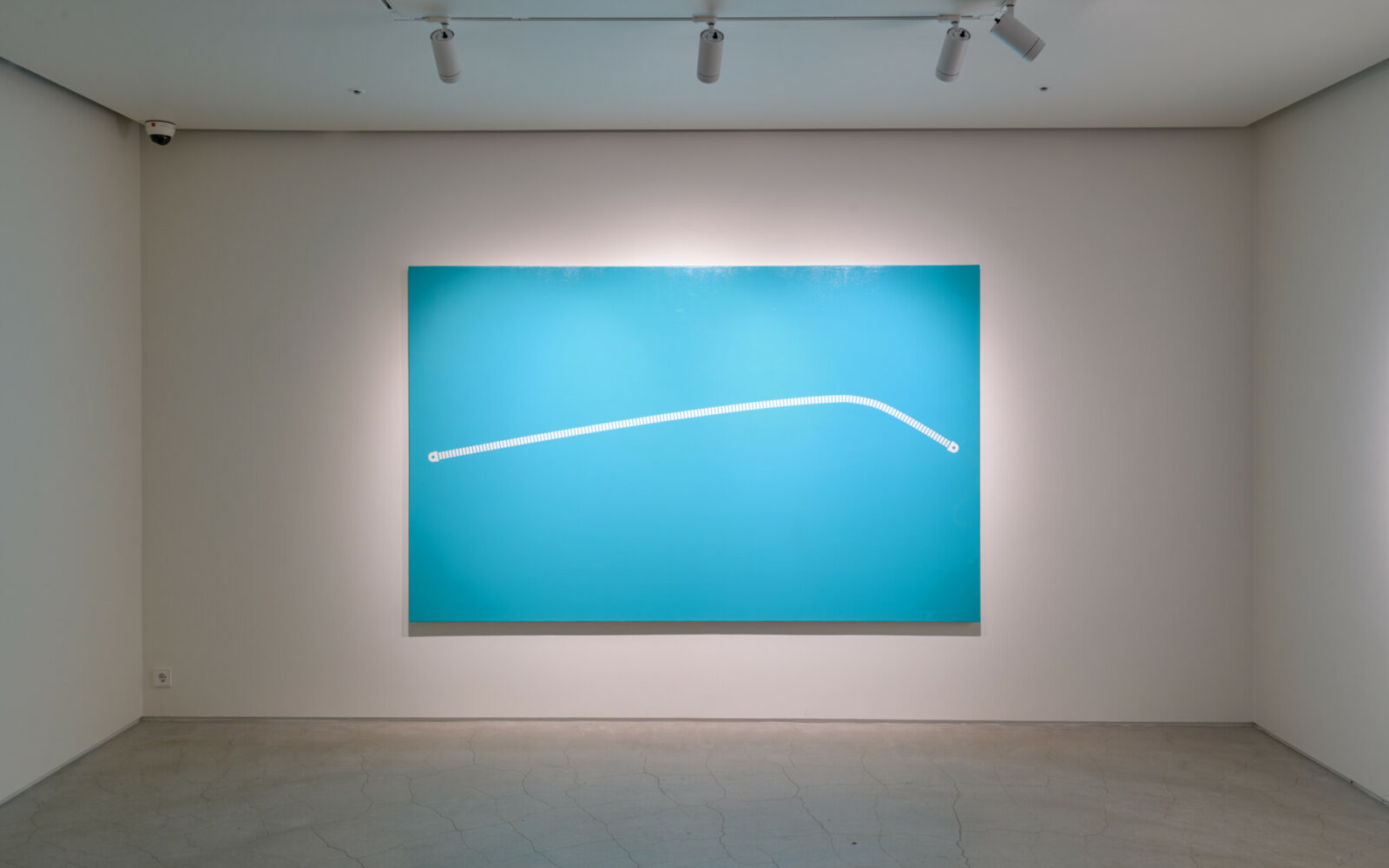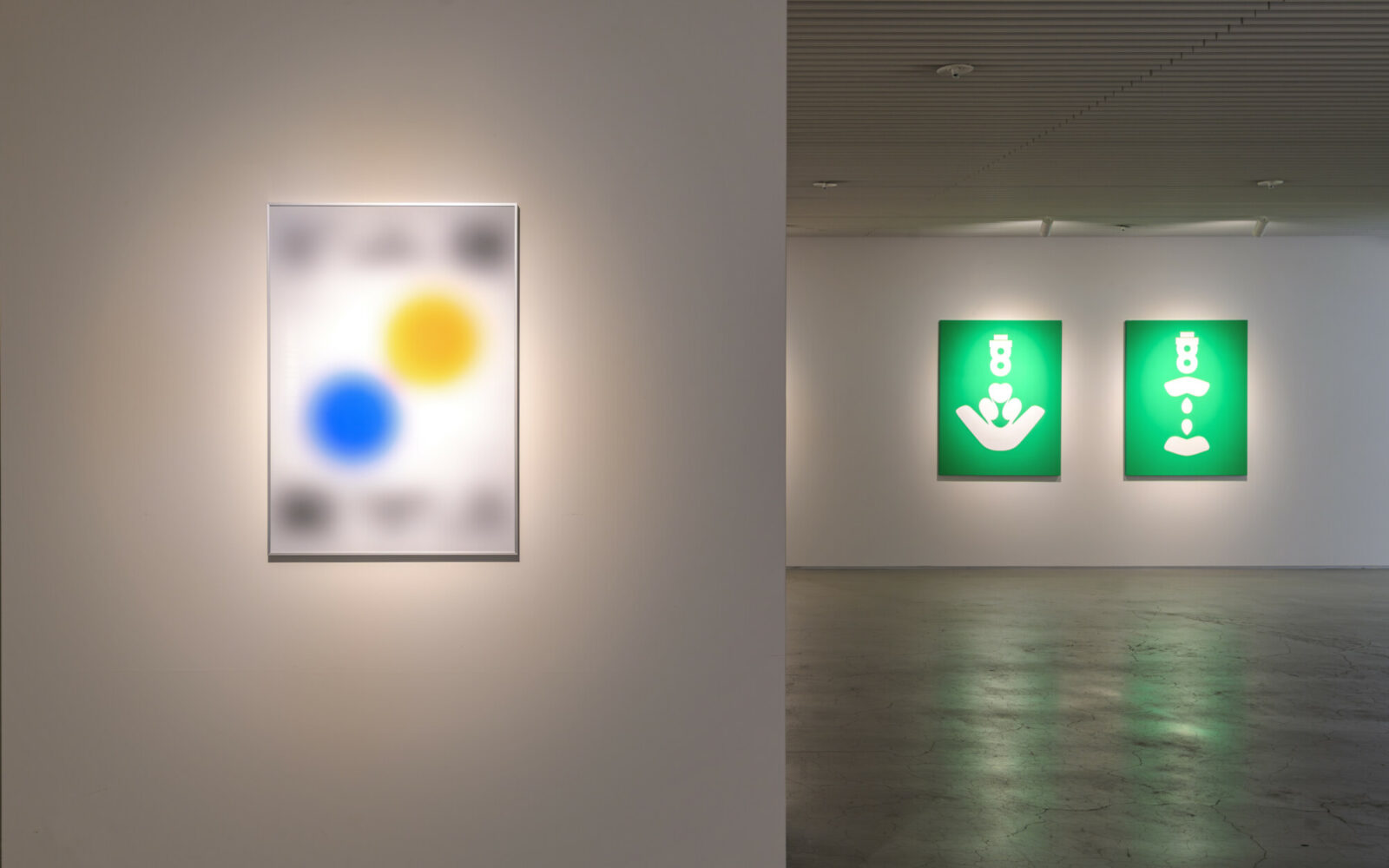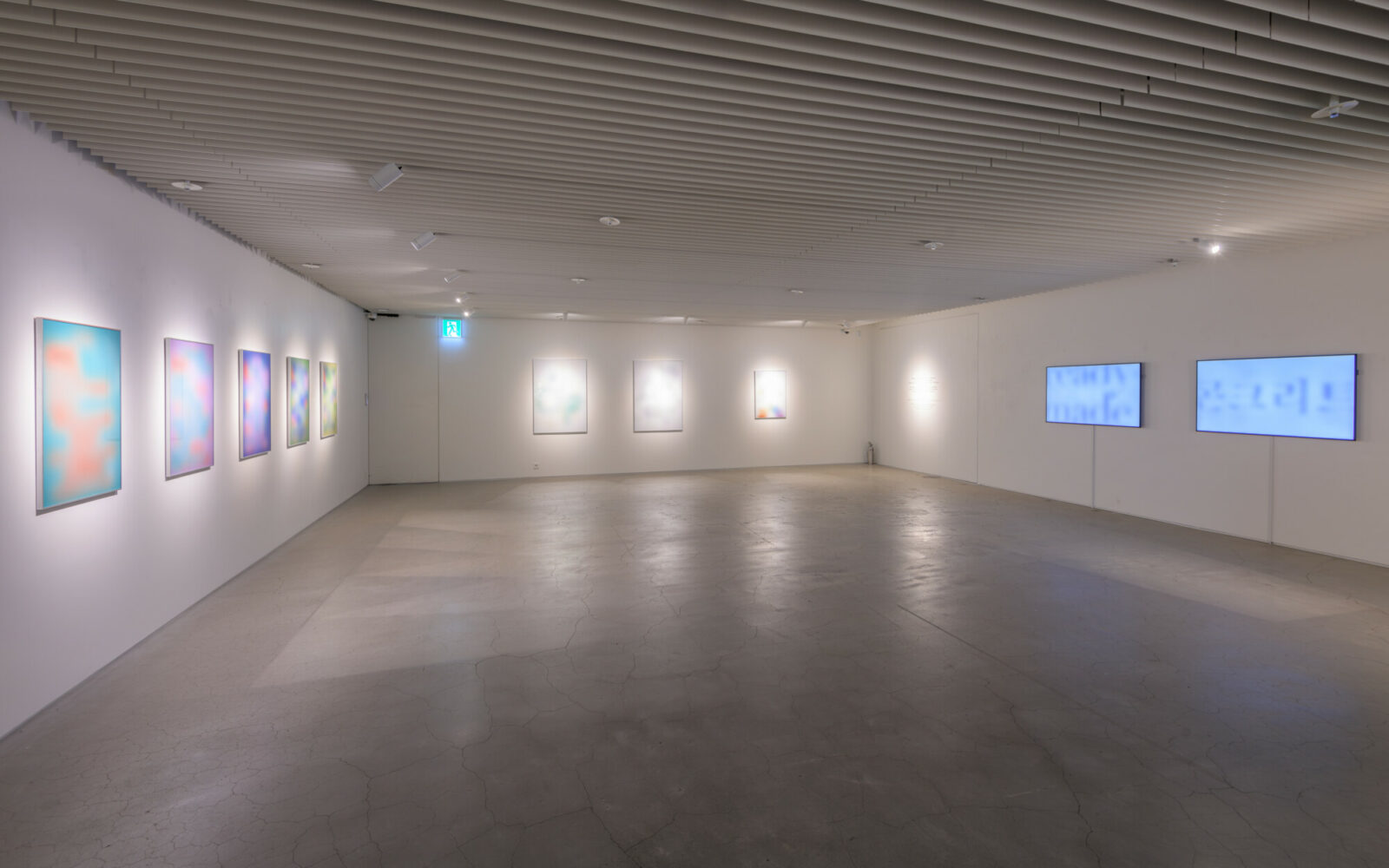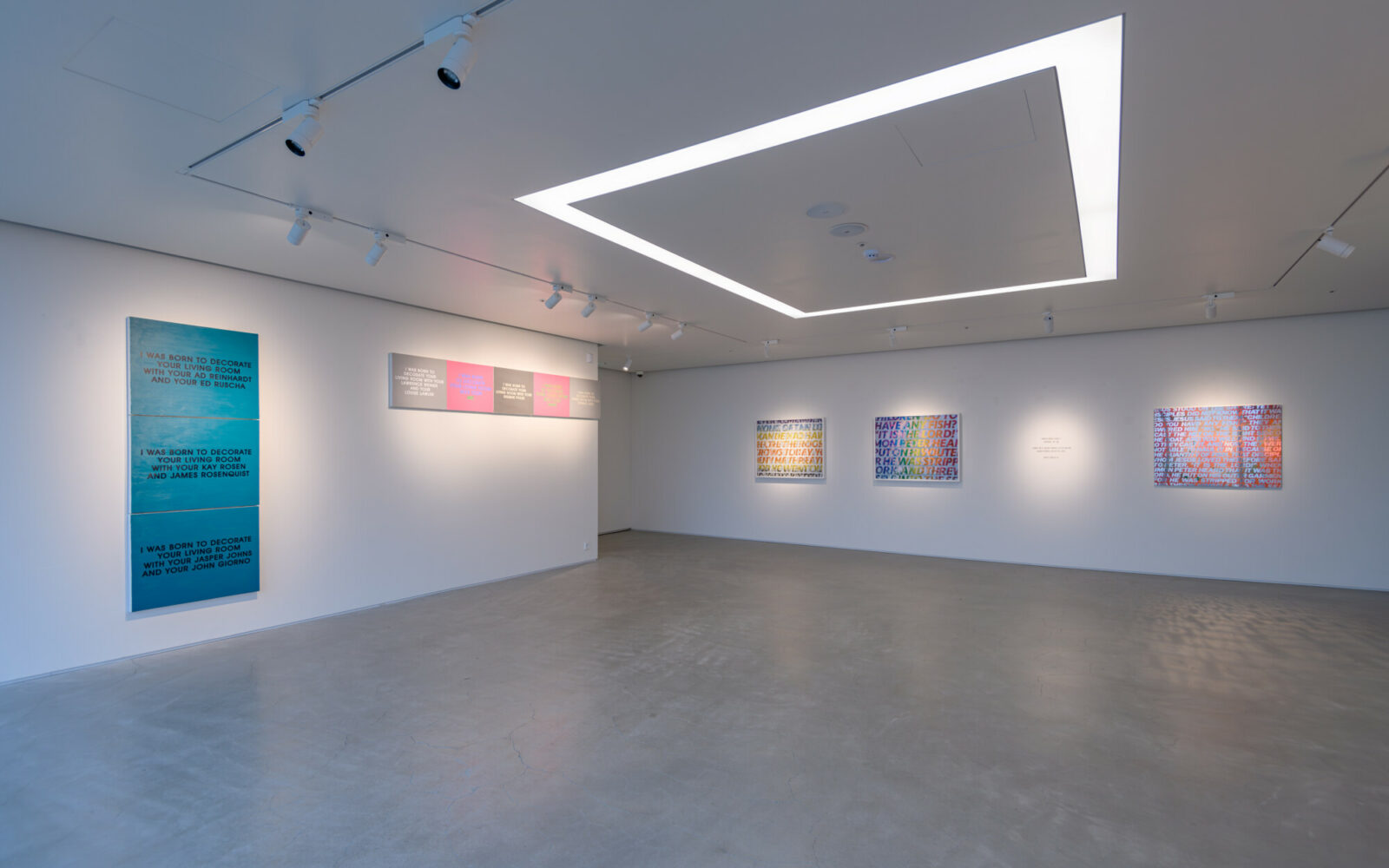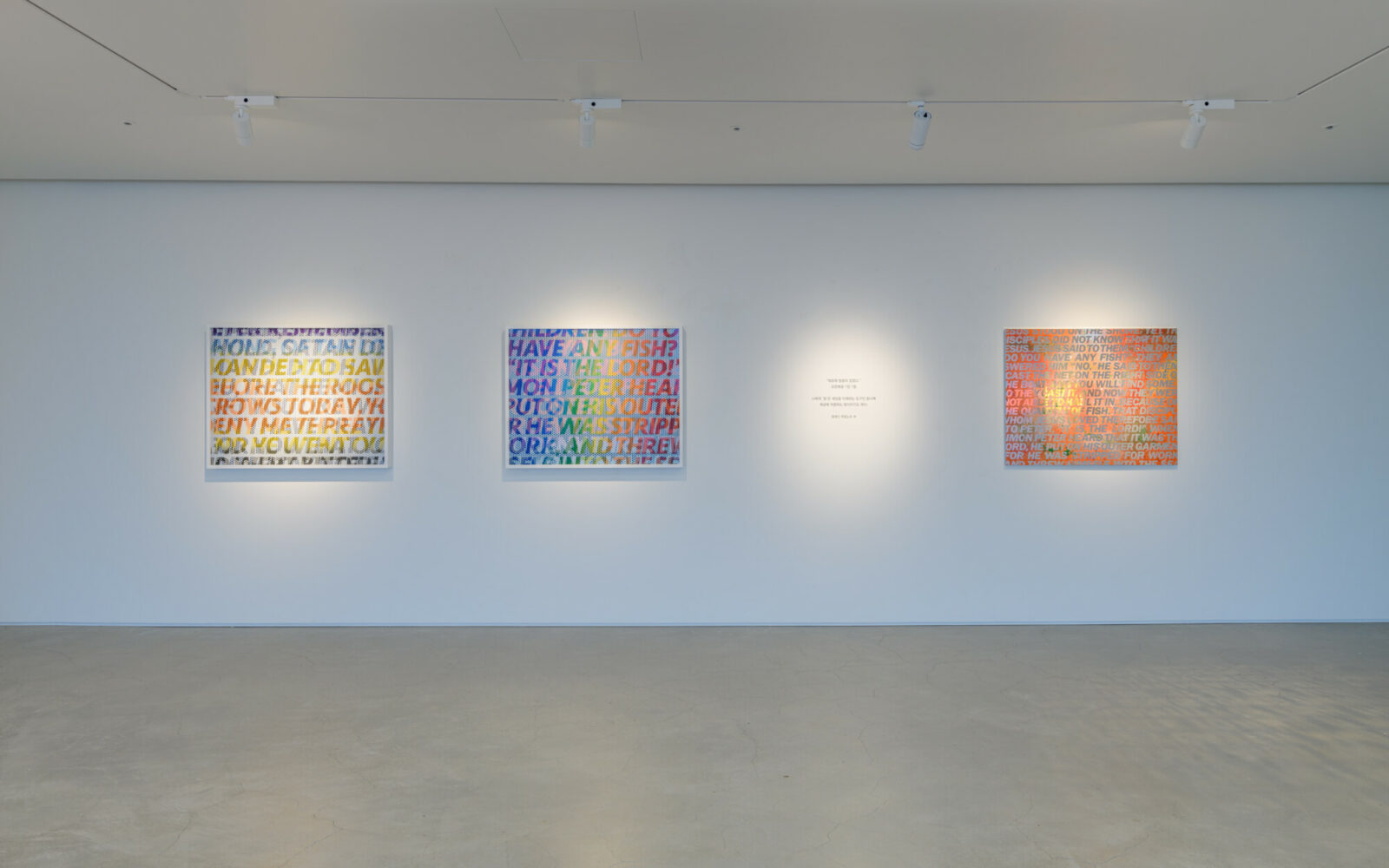The Typography, The Arts
ahn sang-soo, Jung Sane, Kim Seunghyun, Lee Kwangkee, Sulki&MinThe Typography, The Arts
그림과 문자는 오랜 시간, 통합과 분리의 과정을 겪어왔다. 일찍이 그림과 문자는 서로 구분될 것도 없이 같이 사용되곤 하였으나 르네상스 이후 그림과 문자의 ‘공존’은 더 이상 쉽게 볼 수 없게 되었다.
그후 4백 년 동안 회화의 전통에서 문자는 미술로부터 엄격히 분리되었으며, 미술의 영역 바깥에서 ‘타이포그래피(typography)’라는 이름으로 다루어졌다. 이러한 문자가 다시 미술에 등장한 것은 20세기 초 입체파를 필두로 한 아방가르드 미술가들이 문자를 다시 수용하기 시작하기 시작하면서부터다. 피카소와 브라크는 문자를 콜라주라는 방식으로 회화의 구조 속에 문자를 수용하였으며 미래파의 시인들은 문자의 조형적인 배열을 통해 시각적인 시를 추구하였다.
개념과 주장, 사고와 강령을 예술적 행동 안에서 드러내고자 했던 20세기 초의 아방가르드 미술가들에게 미술과 타이포그래피는 통합된 예술의 수단으로 함께 융해되어 있었다. 하지만 이처럼 미술과 상호 융합의 교차점에 서 있던 타이포그래피는 러시아 구축주의가 스탈린의 예술정책에 의해 강제종료 된 1930년대 이후 미술사에서 사라지고, 다시금 문자는 타이포그래피라는 새로운 직종으로 분화하여 급속도로 발전해가는 디자이너들의 전유수단이 되었다.
다시 그림과 문자가 함께 등장하는 계기는 1960년대에 이르러서이다. 멜 보크너, 조셉 코수스를 위시한 개념미술가들에 의해서 문자는 다시금 미술의 중요한 요소가 되었고, 뒤를 이어 바바라 크루거, 제니 훌저 등이 적극적으로 조형언어로 문자를 사용하면서 미술 안의 문자가 더이상 어색하지 않게 되었다.
국내의 경우, 맥락은 다르지만 1960년대에 문자추상을 시작한 이응노에 의해 미술 안에 문자가 활용되기 시작했고 한자교육의 중요성을 알리고자 한 백남준 등이 그림 안에 문자를 적극적으로 사용하면서 자연스럽게 문자가 미술 안에 자리잡았다. 팝아트의 등장도 문자가 미술에 활용되게 된 기폭제나 다름 없었다. 앤디 워홀은 물론 로버트 인디애나 등이 문자를 화면에 적극적으로 담았고 이후 1990년대 미술과 디자인의 경계가 사라지는 시대에 이르러서는 조엘 메슬러와 같이 문자는 미술 안에서 아무런 거리낌이 없이 사용되게 되었다.
이번 전시는 문자를 다루는 동시대 작가들의 작품을 한데 모아 선보이는 자리이다. 작가들은 문자를 그 자체의 조형적 아름다움 때문에 작품에 활용하기도 하지만 그것을 넘어 어떠한 메시지나 강령을 전달하기 위해 사용하기도 한다.
문자는 우리 생활 곳곳에 깊숙히 침투해있다. 그렇기에 문자를 어떻게 인식하는가의 문제가 세계를 바라보는 시각을 정해주기도 한다. 한국 타이포그래피의 중요한 변환점을 가져온 안상수는 물론 전시에 참여한 여러 작가들은 이 문제를 진지하게 고민하는 작가들이다. 전시를 감상하며 미술 내에서 이뤄지는 문자의 다양한 변주를 확인하시길 바란다.
The Typography, The Arts
Painting and letters have been through integration and separation for a long time. Earlier, painting and letters were used together without classification, but after the Renaissance, the “coexistence” of painting and letters became no longer easy to find. For the next 400 years, in the tradition of painting, letters were strictly separated from art and treated outside the realm of art under the name of “typography”. Then, the letters reappeared in art when avant-garde artists, led by cubists, began to accept them again in the early 20th century. Picasso and Braque adopted letters in the structure of the painting through the method of collages, and futurist poets pursued visual poetry through the formative arrangement of letters. To the avant-garde artists in the early 20th century who wanted to reveal concepts and arguments, thoughts and statements within artistic actions, art and typography were fused as a means of integrated art. However, as this, typography, which stood at the intersection of art and mutual convergence, disappeared from art history after the 1930s when Stalin’s art policy forcibly terminated Russian constructivism, and letters classified as a new occupational category, typography, became an exclusive means of rapidly developing designers.
It was in the 1960s that painting and letters appeared together again. Letters became an important element of art again by conceptual artists such as Mel Bochner and Joseph Kosuth, followed by Barbara Kruger and Jenny Holzer, who actively used letters as a formative language, making the letters in art no longer unique. In the case of Korea, although the context is different, letters began to be used in art by Lee Ungno, who started Letter Abstract in the 1960s, and it naturally took place in art by many artists, including Nam June Paik who actively used letters in paintings to promote the importance of Chinese character education. The appearance of pop art is also to be the stimulus for using letters in art. As well as Andy Warhol, Robert Indiana, and other artists actively put letters on the screen and in the 1990s, when the boundaries between art and design became blurred, letters were used without hesitation in art, like in Joel Mesler’s works. This exhibition is a place to present the works of contemporary artists and designers, starting with the works of conceptual artists, whose begun to deal with letters in art in earnest. Artists ,for example Lee Kwangkee, Kim Seunghyun, use letters in their works for their formative beauty, but like Jung Sane some artists use letters to pay homage to conceptual artists, and through this, they use it to convey any statement or message. In addition, designers like Ahn Sangsoo, Sulki & Min change our perceptual system and lead us to think further and differently, actively using letters in unique positions. Please enjoy the exhibition and check out variations of letters in art.
-
ahn sang-soo
Contact
-
Jung Sane
Contact
-
Kim Seunghyun
Contact
-
Lee Kwangkee
Contact
-
Sulki&Min
Contact

